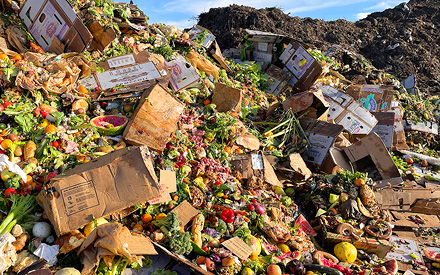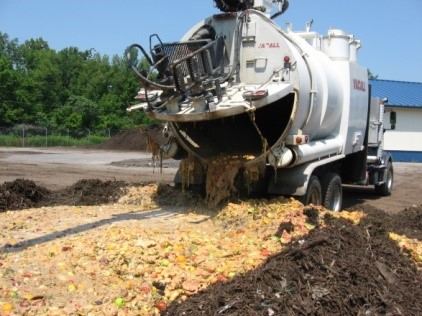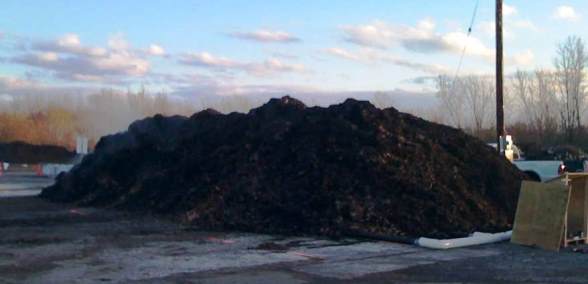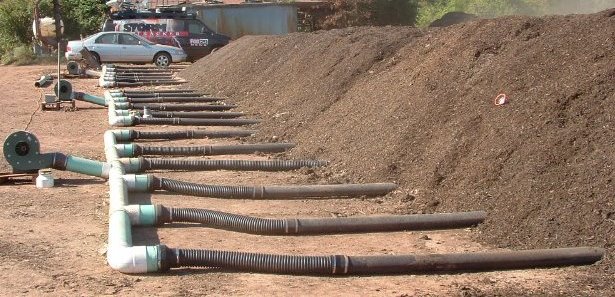“Food waste, also called food residuals and source separated organics, comes from residential collection systems, grocery stores, universities, schools, restaurants, hotels, hospitals, outdoor markets, fairs and festivals, farms and warehouses.
Mixed food waste from these sources can include both pre- and post-plate waste, vegetables, fruits, meat, milk, condiment containers, soiled food wrappers, bottles and cans, plates and napkins, and other paper products as well as coffee grounds.” (1)
In an effort to reduce greenhouse gas generation, there is a growing emphasis on separating food waste from the municipal solid waste stream and keeping it out of our landfills. Composting food waste is a viable option to keep it out of the landfill and to produce a high quality finished compost product that can sequester carbon in the soil (a win-win strategy).
One of the challenges with composting food waste is the variability of its composition. The following three photographs illustrate this point: (Left) grocery waste with an abundance of cardboard and waste paper; (Center) single source food waste (potatoes); and (Right) extremely wet food waste (“vegetable soup”). Each of these examples requires a high level of expertise on the part of the compost facility operator to prepare a suitable initial mix in advance of the composting process.
 |
 |
 |
grocery waste with an abundance
of cardboard and waste paper |
single source food waste (potatoes) |
extremely wet food waste (“vegetable soup”) |
“A second challenge with composting food waste is that it decomposes quickly and is attractive to flies, rodents, birds and other animals. It is often unsightly and can become odorous even before it arrives at the composting site. Therefore, some level of containment is necessary for food waste composting.”
With Aerated Static Pile (ASP) Composting, the initial compost mix is prepared by blending the food waste with a bulking agent such as shredded yard waste. The pile is then constructed over a set of aeration pipes or a below-grade aeration system, and the outside of the pile is covered with a 1-foot thick (minimum) layer of previously composted material, referred to as a biofilter cover or simply a bio-cover. This bio-cover serves to retain heat, minimize off-gassing of odorous compounds and restrict access to flies and wildlife.
The following two photographs illustrate food waste compost piles: (Left) a free-standing ASP for the Onondaga County Resource Recovery Agency (OCRRA) in Syracuse, New York; and (Right) an Extended ASP at the Two Particular Acres compost facility in Royersford, Pennsylvania.
 Free-standing ASP for the Onondaga County Resource Recovery Agency (OCRRA) in Syracuse, NY
Free-standing ASP for the Onondaga County Resource Recovery Agency (OCRRA) in Syracuse, NY
|
 Extended ASP at Two Particular Acres compost facility in Royersford, PA
Extended ASP at Two Particular Acres compost facility in Royersford, PA
|
(1) Reference: The Composting Handbook, edited by Dr. Robert Rynk (and many others), 2022